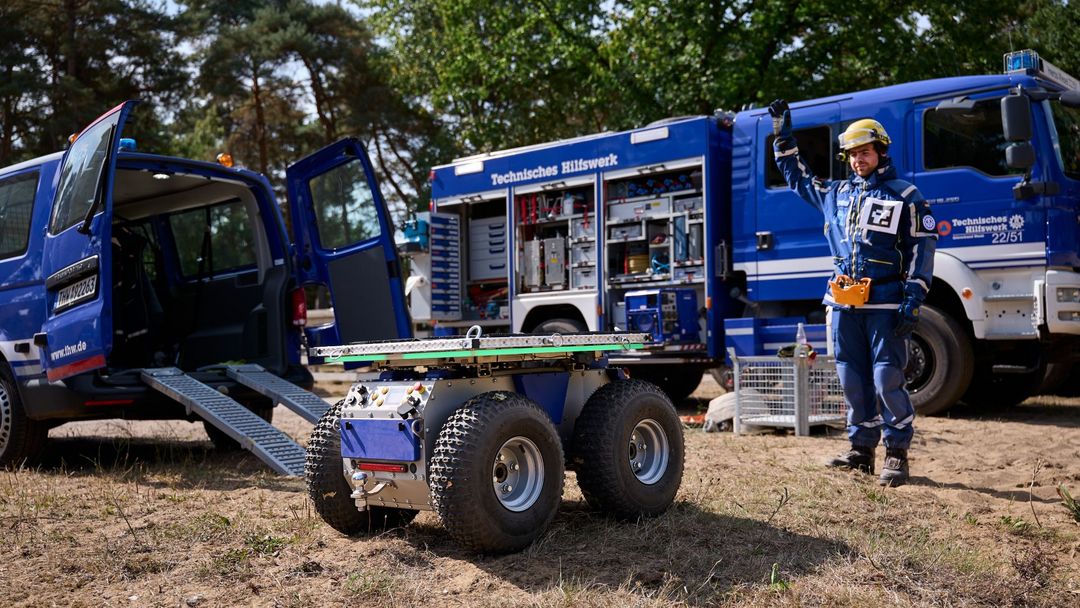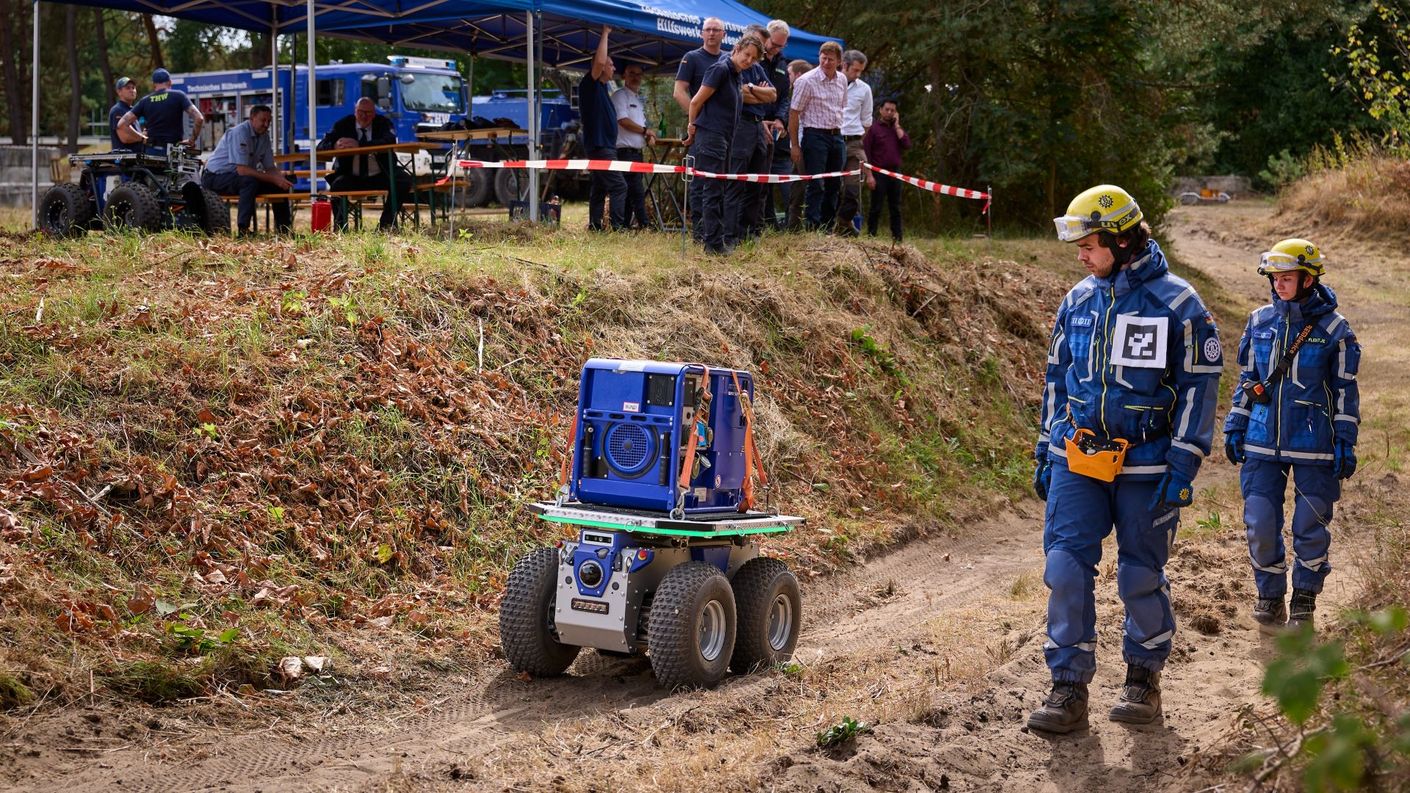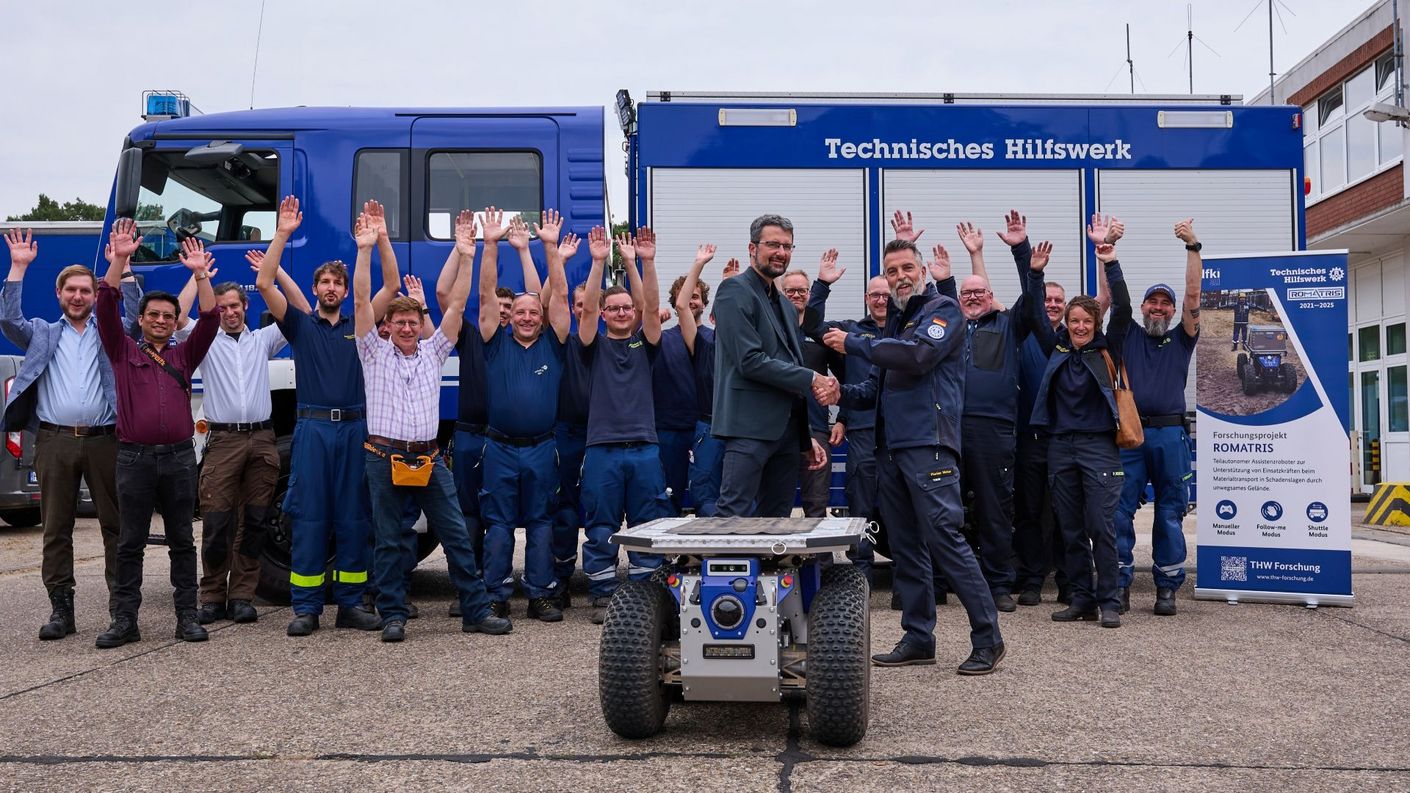Sponsored by:

Helpers in the rubble: DFKI and THW develop AI-supported robot for disaster relief operations
| Press release | Autonomous Systems | Human-Machine Interaction | Robotics | Robotics Innovation Center | Bremen

Robot assists with material transport
After a building collapse – for example, as a result of a gas explosion – every second counts. Rescue workers must transport their sometimes bulky equipment to locations that are difficult to access. Unsafe and unstable ground makes it difficult to move forward and increases the risk of injury. In addition, many devices are so unwieldy that their transport ties up additional emergency personnel.
This is precisely where the THW-funded project "ROMATRIS" (Robotic Material Transport in Disaster Situations) comes in: In close cooperation, the Robotics Innovation Center at DFKI and the THW developed a semi-autonomous, mobile assistance robot that can transport heavy loads even to places where vehicles or stretchers reach their limits.
"The robotic system can relieve our emergency personnel in several ways and is a good example of the practical research carried out at the THW. Not only does it transport heavy loads, it also helps to make operations safer," explains Daniel Weissenrieder, THW project manager and research officer.
Development hand in hand with emergency services
What made ROMATRIS special was the close coordination between research and practice. More than 20 volunteers from 14 THW local associations actively accompanied the development of the robot. Through workshops, field tests, and iterative optimization, a system was created that is tailored to the practical requirements of civil protection.
 © THW/Yann Walsdorf
© THW/Yann WalsdorfHigh-tech for rough terrain
The robot combines robust mechanics with state-of-the-art sensor technology and AI-supported control. Intuitive interfaces enable operation with minimal training: either directly via hand gestures or semi-autonomously during transport between deployment sites. A depth camera recognizes the operator and tracks their position, while a neural network reliably translates their gestures into commands. For autonomous navigation, a 3D sensor system precisely maps the location and enables movement along defined waypoints. In addition, ultrasonic and laser sensors ensure that obstacles are reliably detected and avoided, even in dynamic environments.
With a load capacity of up to 150 kilograms, the system reliably transports heavy or unwieldy materials such as generators, pumps, or hoses over long distances and rough terrain. Three operating modes are available for use: manual control via remote control, a "Follow-Me" mode with gesture recognition and person tracking, and a shuttle mode in which the robot moves independently between two points.
"With ROMATRIS, we are demonstrating how AI-supported robotics can support the work of emergency services. Close cooperation with the THW has enabled us to develop the technology directly in line with civil protection requirements and test it under realistic conditions," says Martin Mallwitz, project manager at the DFKI Robotics Innovation Center.
Successfully tested in realistic scenarios
During the project, two field tests lasting several days were conducted at the THW training center in Hoya, where the robot was tested in various scenarios. Feedback from the emergency services involved was crucial for evaluation and further development. The project concluded with a large-scale demonstration at the THW training ground in Wesel. There, participants were able to experience the system in action and try it out for themselves.
Greater safety and efficiency in civil protection
The results show how technological innovations can relieve the burden on volunteers – whether it be transporting heavy loads, responding to time-critical incidents, or accessing hard-to-reach locations. For the project partners, ROMATRIS represents an important step toward modern, safe, and efficient operational support. At the same time, it opens up new perspectives for logistical solutions in crisis situations.
The ROMATRIS project was funded by the Federal Agency for Technical Relief (THW) over a period of four years – September 1, 2021, to August 31, 2025.
 © THW/Yann Walsdorf
© THW/Yann WalsdorfContact:
Dipl.-Ing. Martin Mallwitz
DFKI Project Lead
- Martin.Mallwitz@dfki.de
- Phone: +49 421 17845 4139
Tom Becker, B.A.
DFKI Project Lead
- Tom.Becker@dfki.de
- Phone: +49 421 17845 6635
